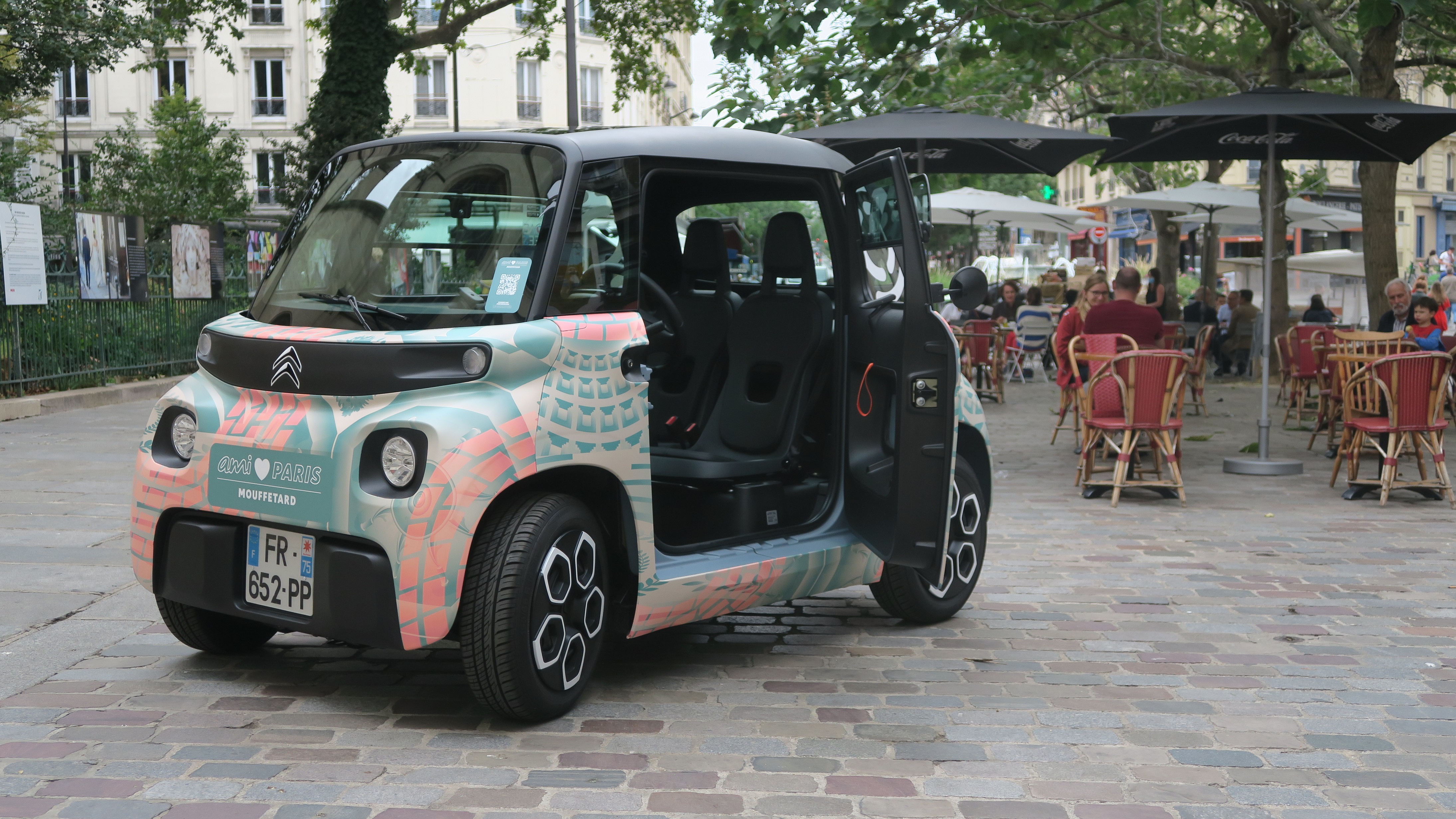

The Citroën Ami looks like something out of an early ‘70s sci-fi movie, a tiny motorized box that transports our protagonist from one side of a futuristic city to meet with the supercomputer that runs their civilization. Released in the spring to the European market, the Ami is a shade below eight feet long, seats two, and gets around with an efficient electric motor with a top speed of 28mph and a range of 46 miles and can be charged from a standard home outlet. In other words, it’s a car perfectly engineered for city living: easy to park, cheap to drive, and with enough kick to handle traffic. It’s already a hit in the infamously gridlocked Paris.

source: https://int-media.citroen.com
The Ami is designed with a purpose and aesthetic that’s probably unfamiliar to American sensibilities, but it’s unlikely to be for long. Traditionally, American cars are gas-guzzling behemoths, but city drivers especially have been moving away from that aesthetic for some time. Hybrids and EVs have been steadily gaining popularity both for economic and environmental concerns. The Smart Car is already making inroads in a lot of cities for basically doing what the Ami does, though not quite as strikingly. I’m not saying the Ami is coming to America—it’s still only in Europe—but it does represent a huge potential market for enterprising dealerships.
I’ve talked a lot about the shift to online retailing, Citroën offering home delivery if you get one of these things. There’s more: because of the vehicle’s small size and easy controls, it’s not even technically a car under French law. Classified as a “light quadricycle,” it’s legal there for fourteen-year-olds to operate. Here, the equivalent would be allowing someone with a learner’s permit as opposed to a full license drive one.
While you can purchase an Ami for around $6600, most of the business model involves renting them, either individually or as part of a rideshare program. This is affordable through some nifty engineering: Citroën keeps the price as low as they possibly can by minimizing the number of unique components they manufacture. My favorite example are the doors: one opens forward, the other backward because they’re the same door. Because the cars—okay, quadricycles—aren’t intended for long distance driving, the interior is as stripped down as you get. If you want a radio, you’re going to have to use your phone.
In California, Governor Newsom recently announced that his state will be phasing out the sale of gas-powered cars. While it’s unlikely that every state will follow California’s example, many will, and demand for EVs will increase everywhere else. Ironically enough, Los Angeles is the one city where the Ami wouldn’t work, but places like New York and Boston would be ideal. The point is not to look at the Ami as a weird little not-quite-a-car, but to see it as a potential solution for the demands of a motivated customer base.
And admit it, part of you wants to drive one.


